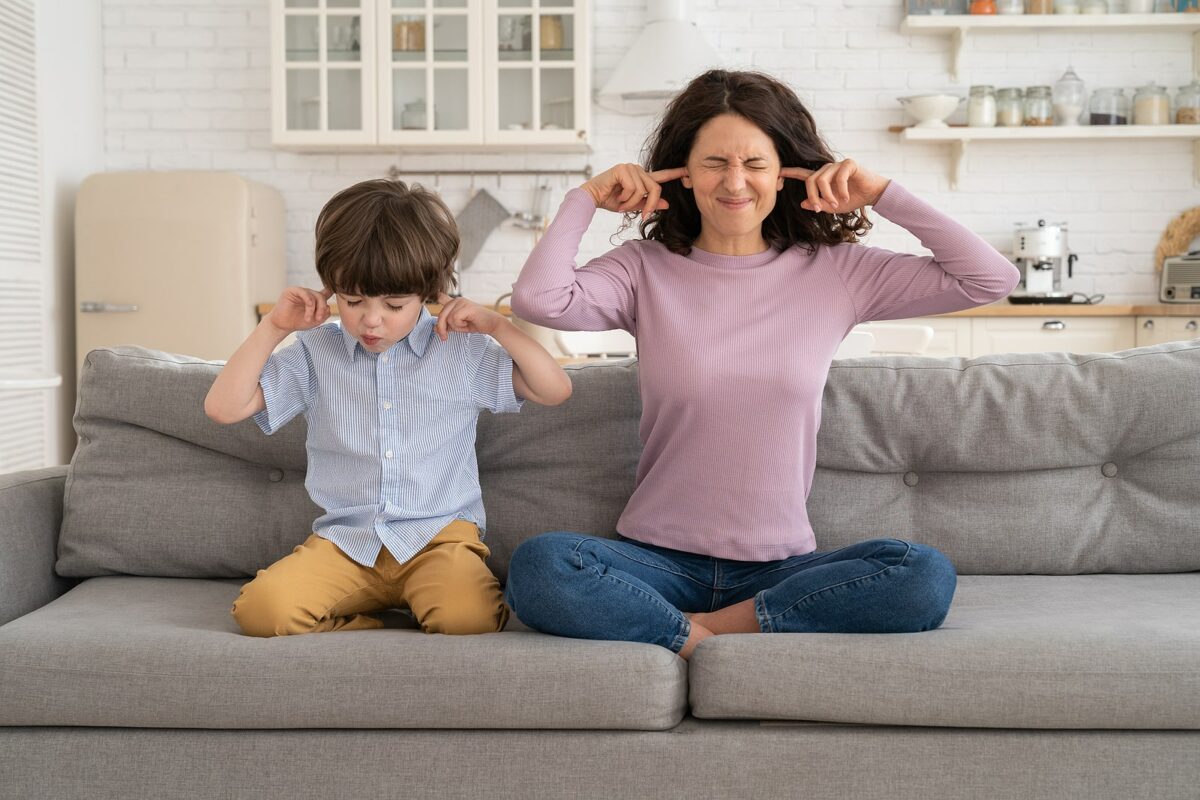As parents, we constantly strive to ensure the well-being of our children, from their physical health to their emotional development. One vital aspect often overlooked, however, is the impact of noise on our little ones. In this article, we will dive into the important topic of “Just how loud is too loud for kids,” unraveling the mysteries of decibels and offering practical tips to protect your child’s delicate hearing. Let’s embark on this informative journey and learn how to maintain a harmonious soundscape for our young ones.
Understanding Decibels: The Key to Safe Sound Levels
Decibels (dB) are the units used to measure sound intensity. The higher the decibel level, the louder the sound. Prolonged exposure to high-decibel sounds can lead to irreversible hearing damage. Children are particularly vulnerable due to their still-developing auditory systems. To shed some light on safe sound levels, here are a few key benchmarks:
- Normal conversation: A typical conversation between two people occurs at around 60-70 dB. This level of sound is generally safe for children and does not pose any risk of harm.
- Household appliances: Vacuum cleaners, blenders, and hair dryers can generate noise levels between 70-90 dB. While occasional exposure to these sounds is unlikely to cause harm, it’s important to minimize their duration and distance to protect your child’s hearing.
- Television and music: Television sets and audio devices often entertain us with sound levels ranging from 70-85 dB. Ensuring reasonable volume levels and limiting screen time can go a long way in preserving your child’s auditory health.
- Concerts and sporting events: Live performances and stadiums can produce incredibly loud noise levels, often exceeding 100 dB. Attending such events with children should be accompanied by proper hearing protection, such as earplugs or earmuffs, to safeguard their delicate ears.
Recognizing Warning Signs: How to Identify Excessive Noise
While decibel measurements provide a general guideline, it is equally crucial to be able to recognize when noise becomes excessive for your child. Here are some warning signs to watch out for:
- Covering ears: If your child consistently covers their ears or shows discomfort in noisy environments, it may indicate that the sound levels are too high for their comfort.
- Difficulty hearing conversations: Struggling to hear and understand conversations, especially in the presence of background noise, might suggest that their hearing is being strained by excessive noise exposure.
- Ringing or buzzing in the ears: If your child complains of a persistent ringing or buzzing sensation in their ears after exposure to loud sounds, it could be a sign of temporary hearing damage.
- Changes in behavior: Excessive noise can be overwhelming for children, leading to irritability, fatigue, or difficulty concentrating. If you notice abrupt changes in their behavior following exposure to loud environments, it’s essential to take necessary action.
Protecting Your Child’s Hearing: Practical Tips and Strategies
- Now that we’ve explored the significance of safe sound levels and identified warning signs, let’s delve into practical steps you can take to protect your child’s hearing:
- Create a peaceful home environment: Designate quiet zones within your home, especially in areas where your child spends a significant amount of time, such as bedrooms or study areas. Minimize background noise and promote a calm atmosphere.
- Use hearing protection: When attending loud events or engaging in noisy activities such as fireworks displays or motor racing, ensure your child wears appropriate hearing protection, such as earplugs or earmuffs. Remember, prevention is key!
- Set volume limits: Establish clear guidelines regarding the use of electronic devices, such as televisions, smartphones, and tablets. Implement volume limits that are safe for your child’s ears and encourage regular breaks from prolonged headphone use.
- Educate and raise awareness: Teach your child about the importance of protecting their hearing. Explain why they should avoid excessively loud sounds and how noise exposure can impact their hearing in the long term.
- Monitor noise levels: Utilize smartphone apps or dedicated sound level meters to monitor noise levels in various environments. This can help you identify potential risks and take appropriate measures to mitigate them.
Final Thoughts
In the pursuit of our children’s well-being, preserving their auditory health is an integral part of responsible parenting. By understanding safe sound levels, recognizing warning signs, and implementing practical strategies, we can ensure an environment that nurtures and protects our children’s hearing. Remember, every effort counts when it comes to their long-term auditory well-being.
We hope you found this information helpful and insightful. If you have any questions regarding your child’s hearing or would like to schedule an appointment, please contact us. Our friendly staff of hearing health professionals are ready to assist you with all your hearing needs.

